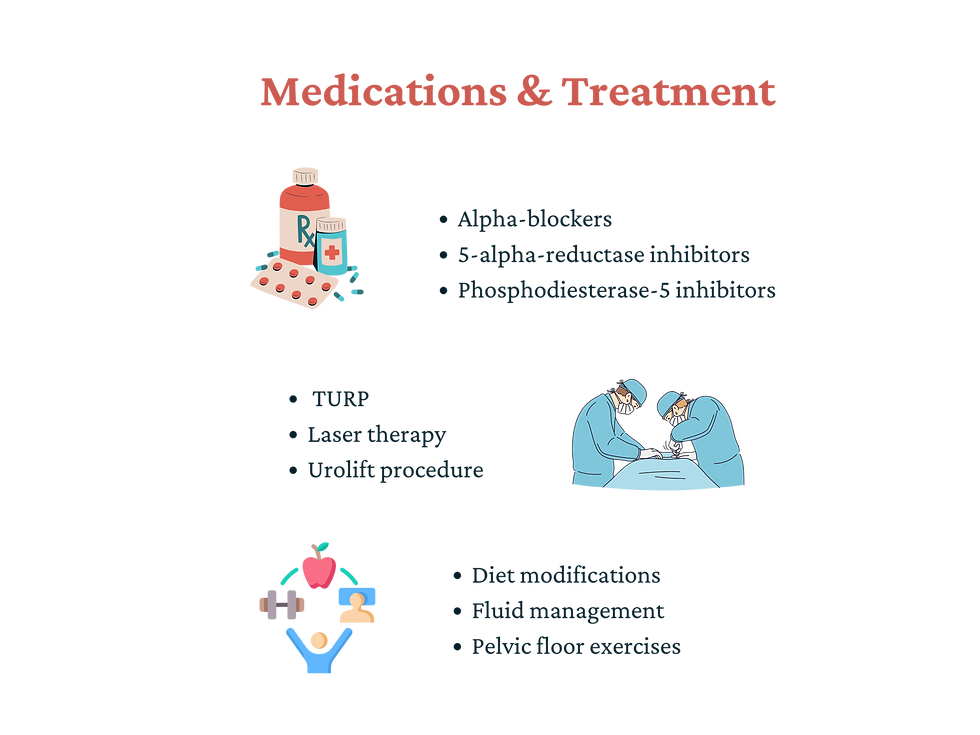Benign Prostatic Hyperplasia
- Teodora Gjorgieva
- Jan 22
- 2 min read
Updated: Feb 24
Benign Prostatic Hyperplasia is a noncancerous enlargement of the prostate gland, commonly seen in aging men. It can lead to urinary issues such as frequent urination, difficulty starting urination, or a weak urine stream.
Understanding the symptoms and causes of BPH is essential for recognizing the condition and seeking appropriate treatment.
Symptoms of BPH
Frequent urination
Weak urine stream
Urgency to urinate
Incomplete bladder emptying
Straining during urination
Causes of BPH
Age-related hormonal changes
Genetics
Chronic inflammation
Obesity and metabolic syndrome
Lifestyle factors

Benign Prostatic Hyperplasia (BPH) can often be managed effectively with a combination of medications, lifestyle changes, and medical procedures. Treatment options vary depending on the severity of symptoms, the size of the prostate, and the patient’s overall health. Here are some common medications and treatments for BPH:
Medications for BPH
Alpha-Blockers: Help relax the muscles in the prostate and bladder neck to improve urine flow.
5-Alpha-Reductase Inhibitors: Reduce the size of the prostate by blocking the hormones that cause prostate growth.
Phosphodiesterase-5 Inhibitors: Primarily used for erectile dysfunction but can also help improve BPH symptoms.
Procedures for BPH
TURP (Transurethral Resection of the Prostate): A surgical procedure to remove parts of the prostate that block urine flow.
Laser Therapy: Uses concentrated light to remove or shrink excess prostate tissue.
UroLift Procedure: A minimally invasive treatment that lifts and holds enlarged prostate tissue out of the way to relieve symptoms.
Lifestyle and Non-Surgical Treatments
Diet Modifications: Incorporate foods rich in antioxidants and avoid excessive caffeine and alcohol.
Fluid Management: Limit fluid intake in the evening to reduce nighttime urination.
Pelvic Floor Exercises: Strengthen the muscles that help control urination.




Comments